Samuel Cheng
Water Mapping and Change Detection Using Time Series Derived from the Continuous Monitoring of Land Disturbance Algorithm
Apr 04, 2025Abstract:Given the growing environmental challenges, accurate monitoring and prediction of changes in water bodies are essential for sustainable management and conservation. The Continuous Monitoring of Land Disturbance (COLD) algorithm provides a valuable tool for real-time analysis of land changes, such as deforestation, urban expansion, agricultural activities, and natural disasters. This capability enables timely interventions and more informed decision-making. This paper assesses the effectiveness of the algorithm to estimate water bodies and track pixel-level water trends over time. Our findings indicate that COLD-derived data can reliably estimate estimate water frequency during stable periods and delineate water bodies. Furthermore, it enables the evaluation of trends in water areas after disturbances, allowing for the determination of whether water frequency increases, decreases, or remains constant.
Pancreatic Tumor Segmentation as Anomaly Detection in CT Images Using Denoising Diffusion Models
Jun 04, 2024



Abstract:Despite the advances in medicine, cancer has remained a formidable challenge. Particularly in the case of pancreatic tumors, characterized by their diversity and late diagnosis, early detection poses a significant challenge crucial for effective treatment. The advancement of deep learning techniques, particularly supervised algorithms, has significantly propelled pancreatic tumor detection in the medical field. However, supervised deep learning approaches necessitate extensive labeled medical images for training, yet acquiring such annotations is both limited and costly. Conversely, weakly supervised anomaly detection methods, requiring only image-level annotations, have garnered interest. Existing methodologies predominantly hinge on generative adversarial networks (GANs) or autoencoder models, which can pose complexity in training and, these models may face difficulties in accurately preserving fine image details. This research presents a novel approach to pancreatic tumor detection, employing weak supervision anomaly detection through denoising diffusion algorithms. By incorporating a deterministic iterative process of adding and removing noise along with classifier guidance, the method enables seamless translation of images between diseased and healthy subjects, resulting in detailed anomaly maps without requiring complex training protocols and segmentation masks. This study explores denoising diffusion models as a recent advancement over traditional generative models like GANs, contributing to the field of pancreatic tumor detection. Recognizing the low survival rates of pancreatic cancer, this study emphasizes the need for continued research to leverage diffusion models' efficiency in medical segmentation tasks.
Bayesian Federated Neural Matching that Completes Full Information
Nov 15, 2022



Abstract:Federated learning is a contemporary machine learning paradigm where locally trained models are distilled into a global model. Due to the intrinsic permutation invariance of neural networks, Probabilistic Federated Neural Matching (PFNM) employs a Bayesian nonparametric framework in the generation process of local neurons, and then creates a linear sum assignment formulation in each alternative optimization iteration. But according to our theoretical analysis, the optimization iteration in PFNM omits global information from existing. In this study, we propose a novel approach that overcomes this flaw by introducing a Kullback-Leibler divergence penalty at each iteration. The effectiveness of our approach is demonstrated by experiments on both image classification and semantic segmentation tasks.
Capsule networks with non-iterative cluster routing
Sep 19, 2021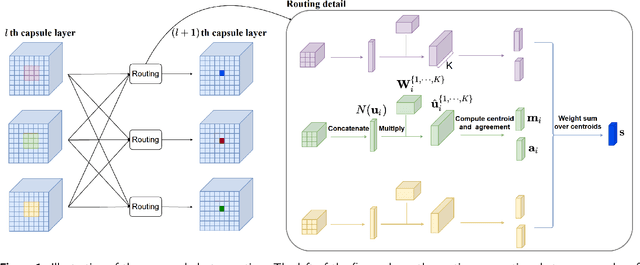

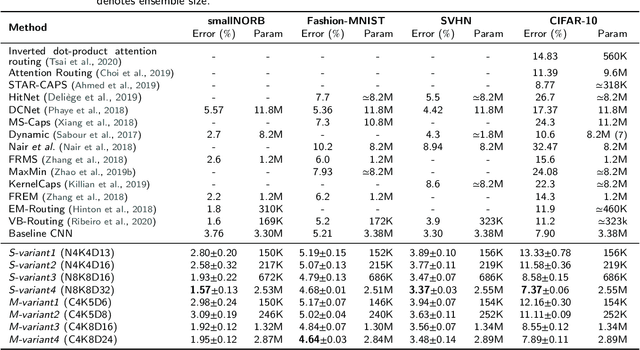
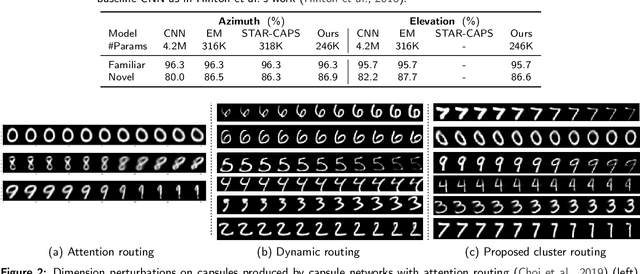
Abstract:Capsule networks use routing algorithms to flow information between consecutive layers. In the existing routing procedures, capsules produce predictions (termed votes) for capsules of the next layer. In a nutshell, the next-layer capsule's input is a weighted sum over all the votes it receives. In this paper, we propose non-iterative cluster routing for capsule networks. In the proposed cluster routing, capsules produce vote clusters instead of individual votes for next-layer capsules, and each vote cluster sends its centroid to a next-layer capsule. Generally speaking, the next-layer capsule's input is a weighted sum over the centroid of each vote cluster it receives. The centroid that comes from a cluster with a smaller variance is assigned a larger weight in the weighted sum process. Compared with the state-of-the-art capsule networks, the proposed capsule networks achieve the best accuracy on the Fashion-MNIST and SVHN datasets with fewer parameters, and achieve the best accuracy on the smallNORB and CIFAR-10 datasets with a moderate number of parameters. The proposed capsule networks also produce capsules with disentangled representation and generalize well to images captured at novel viewpoints. The proposed capsule networks also preserve 2D spatial information of an input image in the capsule channels: if the capsule channels are rotated, the object reconstructed from these channels will be rotated by the same transformation. Codes are available at https://github.com/ZHAOZHIHAO/ClusterRouting.
How likely is a random graph shift-enabled?
Aug 28, 2021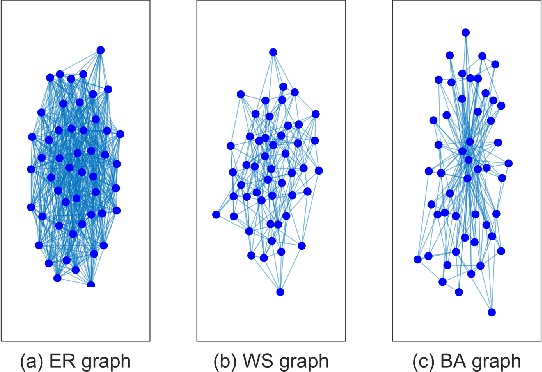
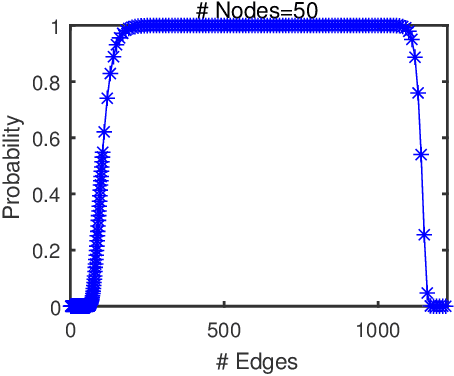
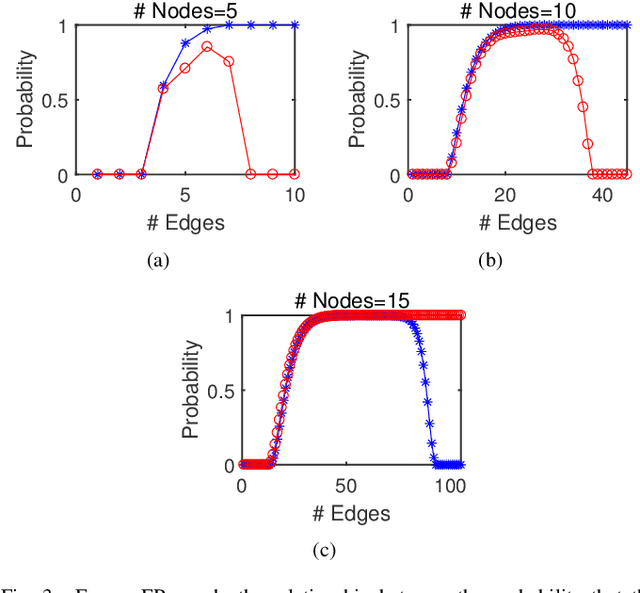
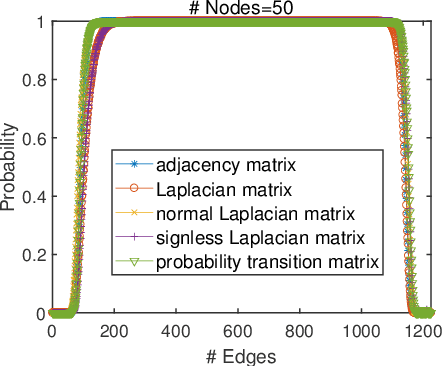
Abstract:The shift-enabled property of an underlying graph is essential in designing distributed filters. This article discusses when a random graph is shift-enabled. In particular, popular graph models ER, WS, BA random graph are used, weighted and unweighted, as well as signed graphs. Our results show that the considered unweighted connected random graphs are shift-enabled with high probability when the number of edges is moderately high. However, very dense graphs, as well as fully connected graphs, are not shift-enabled. Interestingly, this behaviour is not observed for weighted connected graphs, which are always shift-enabled unless the number of edges in the graph is very low.
Probabilistic Federated Learning of Neural Networks Incorporated with Global Posterior Information
Dec 06, 2020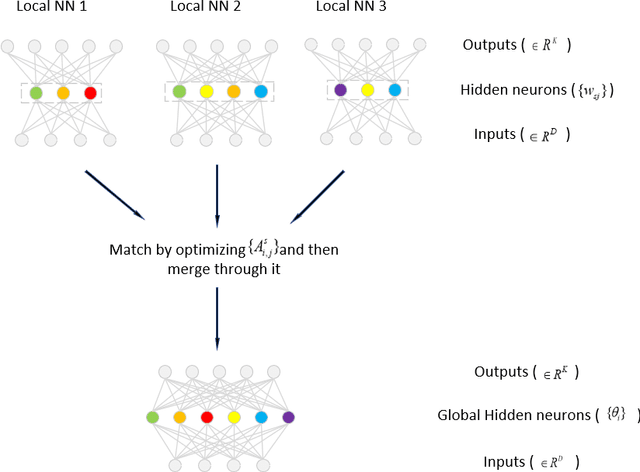

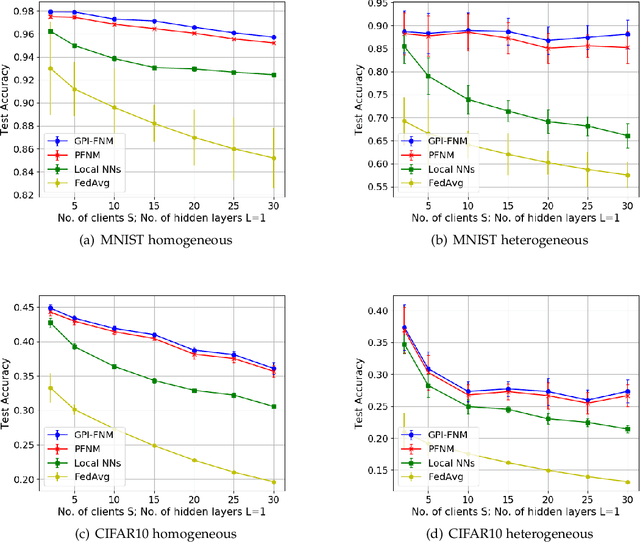
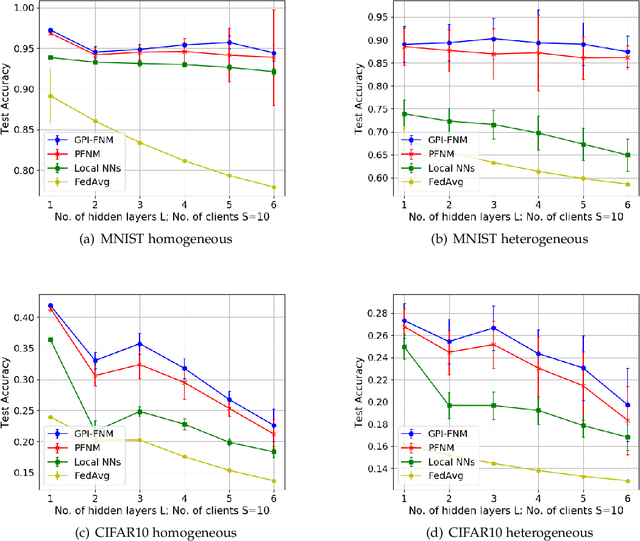
Abstract:In federated learning, models trained on local clients are distilled into a global model. Due to the permutation invariance arises in neural networks, it is necessary to match the hidden neurons first when executing federated learning with neural networks. Through the Bayesian nonparametric framework, Probabilistic Federated Neural Matching (PFNM) matches and fuses local neural networks so as to adapt to varying global model size and the heterogeneity of the data. In this paper, we propose a new method which extends the PFNM with a Kullback-Leibler (KL) divergence over neural components product, in order to make inference exploiting posterior information in both local and global levels. We also show theoretically that The additional part can be seamlessly concatenated into the match-and-fuse progress. Through a series of simulations, it indicates that our new method outperforms popular state-of-the-art federated learning methods in both single communication round and additional communication rounds situation.
Neural Network for NILM Based on Operational State Change Classification
Mar 19, 2019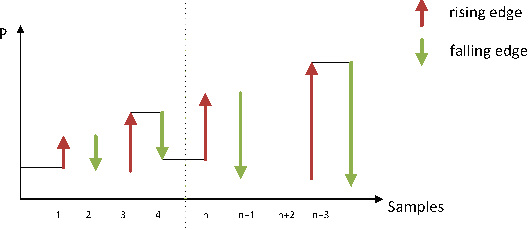

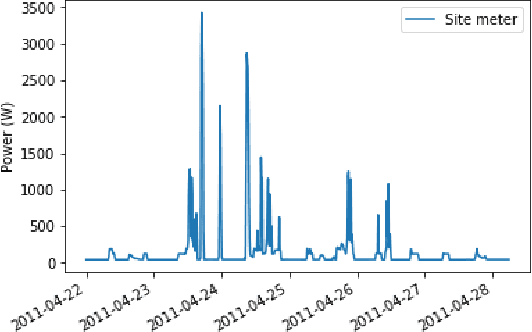
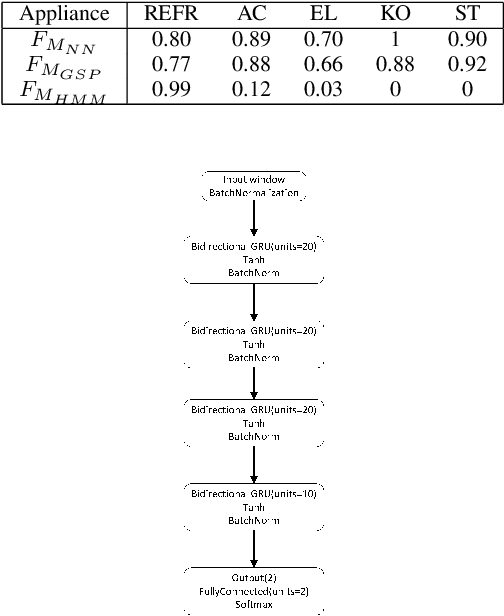
Abstract:Energy disaggregation in a non-intrusive way estimates appliance level electricity consumption from a single meter that measures the whole house electricity demand. Recently, with the ongoing increment of energy data, there are many data-driven deep learning architectures being applied to solve the non-intrusive energy disaggregation problem. However, most proposed methods try to estimate the on-off state or the power consumption of appliance, which need not only large amount of parameters, but also hyper-parameter optimization prior to training and even preprocessing of energy data for a specified appliance. In this paper, instead of estimating on-off state or power consumption, we adapt a neural network to estimate the operational state change of appliance. Our proposed solution is more feasible across various appliances and lower complexity comparing to previous methods. The simulated experiments in the low sample rate dataset REDD show the competitive performance of the designed method, with respect to other two benchmark methods, Hidden Markov Model-based and Graph Signal processing-based approaches.
 Add to Chrome
Add to Chrome Add to Firefox
Add to Firefox Add to Edge
Add to Edge